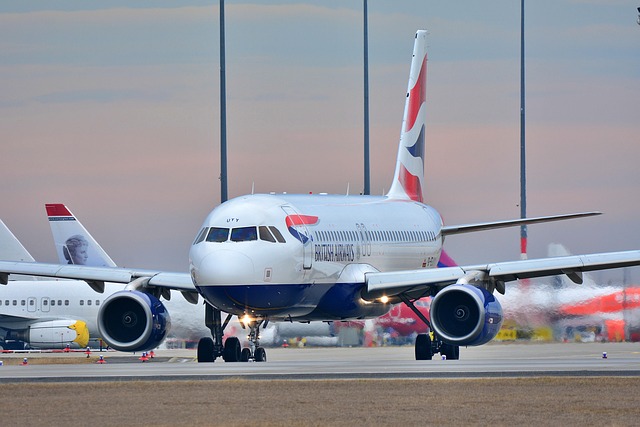
Please note: As an Amazon Associate we earn from qualifying purchases. Details here.
Can you take an electric bike on a plane? Yes, flying with an e-bike is allowed, but the battery is the tricky part.
Most e-bike batteries (300-700Wh) exceed airline limits (160Wh), so you’ve got options: ship your battery ahead, bring a smaller travel battery, or rent one at your destination. The bike itself can be checked as luggage once disassembled.
Always call your airline a few days ahead to check their specific rules. With a bit of planning, you’ll be riding your e-bike at your destination without any airport drama.
Look…
If you want to take your electric bike on vacation or to a new home, then you should know that flying with an ebike is possible, but it’s not as simple as checking a regular suitcase.
Airlines have strict rules about the lithium batteries that power electric bikes, and you’ll need to plan ahead.
The good news is that with some preparation and understanding of the rules, you can successfully achieve your goal and avoid problems at the airport.
Let’s get started.
Airline Regulations for Electric Bikes
The primary concern airlines have about electric bikes isn’t the frame or mechanical components, it’s the battery.
Lithium-ion batteries, which power most electric bikes, are classified as hazardous materials by aviation authorities worldwide due to their potential fire risk if damaged.

The International Air Transport Association (IATA) and Federal Aviation Administration (FAA) have established clear guidelines for transporting lithium batteries, which airlines must follow.
These guidelines focus primarily on battery capacity, measured in watt-hours (Wh).
Basically, the batteries exceeding 160Wh face significant restrictions. Unfortunately, most e-bike batteries range between 300-700Wh, placing them well above this threshold.
According to FAA regulations, batteries between 101-160Wh require airline approval and must be carried in carry-on baggage only, with a limit of two spare batteries per passenger.
Batteries exceeding 160Wh are generally prohibited in carry-on or checked baggage on passenger aircraft, with extremely limited exceptions requiring special approval.
The reasoning behind aviation authorities to strictly regulate lithium batteries because when damaged, they can experience thermal runaway – essentially catching fire at temperatures exceeding 1,000°F.
These fires are exceptionally difficult to extinguish and can be catastrophic in an aircraft environment.
As a result, you can’t simply check your complete electric bike with its battery installed.
Battery Restrictions by Major Airlines
Now…
Most carriers follow similar regulations based on international safety standards, but implementation details vary.
Here’s how major carriers handle e-bike batteries:
Domestic U.S. Carriers
American Airlines permits bicycles as checked baggage (subject to oversized baggage fees), but batteries must be removed. Only batteries under 160Wh can be carried in cabin luggage. Batteries between 100-160Wh must be protected against short circuits and carried in carry-on baggage.
Delta Airlines allows lithium-ion batteries up to 160Wh in carry-on luggage only, with no special approval process required for batteries under this threshold. Batteries must have terminals protected against short circuits.
United Airlines explicitly prohibits lithium batteries exceeding 160Wh on their aircraft, regardless of whether they’re for e-bikes or other devices. Batteries under 160Wh must be carried in the cabin.
Southwest Airlines allows bicycle frames as checked luggage but maintains the standard 160Wh limit for lithium batteries in carry-on bags. Their policy specifically notes that “battery-powered bicycles” must have batteries removed and carried in the cabin if under 160Wh.

International Carriers
British Airways restricts lithium batteries to a maximum of 160Wh, requiring them to be carried in hand luggage with protected terminals. They specify that e-bike batteries typically exceed this limit and are generally not permitted.
Lufthansa maintains the 160Wh restriction for batteries in carry-on luggage and provides specific guidance for transporting bicycles, requiring battery removal for e-bikes.
Air France follows IATA guidelines, limiting lithium batteries to 160Wh in carry-on baggage, with a maximum of two spare batteries per passenger.
Emirates has particularly strict policies, allowing lithium batteries up to 160Wh only in carry-on luggage and limiting passengers to one spare battery in certain cases.
Qatar Airways permits a maximum of two spare lithium-ion batteries between 100-160Wh in carry-on baggage, with specific packaging requirements to prevent short circuits.
Important note:
Airline policies frequently change, so contacting your specific airline at least 48 hours before your flight is essential. Request written confirmation of their approval to avoid issues at check-in.
Solutions for Flying with Electric Bikes
Now…
Given these restrictions, what are your options for traveling with an e-bike?
There are a few solutions for you, depending on your specific needs and destination.
Shipping Your Battery Separately
Some specialized shipping companies can transport lithium batteries as hazardous materials.
Companies like BikeFlights offer services specifically for cyclists, though shipping batteries internationally involves complex documentation and higher costs.
This option works best when:
- You’re traveling one-way
- You have a delivery address at your destination
- You can ship your battery 1-2 weeks ahead of your travel date
Costs typically range from $100-300 domestically and $250-600 internationally, depending on battery size and destination.
Renting a Battery at Your Destination
If traveling to popular cycling destinations, consider shipping just the bike and renting a compatible battery upon arrival.

Several companies in cycling-popular regions like the Alps, Barcelona, and California now offer e-bike battery rental services.
Purchasing a Travel-Compliant Battery
Some manufacturers now offer “flight-friendly” e-bike batteries that stay under the 160Wh limit. While these provide less range than standard batteries, they can be legally carried onboard most flights.
Companies like Grin Technologies offers their smaller capacity batteries that comply with the 160Wh airline limit.
REI occasionally stocks portable e-bike batteries, though specific product availability varies.
Luna Cycle produces several batteries designed to meet travel requirements.
The downside?
These batteries typically provide only 20-30% of the range of standard e-bike batteries, which is enough for short urban rides but inadequate for serious cycling adventures.
Many e-cyclists use these as stopgap solutions or combine multiple small batteries at their destination.
Before purchasing, verify the watt-hour rating is clearly marked on the battery case, as this is what TSA and airline staff will check.
Preparing Your Electric Bike for Air Travel
If you’ve sorted out the battery situation, you’ll still need to properly prepare the bicycle itself for air travel.
Disassembling Your E-Bike
Most airlines require bikes to be packaged in a bike box or case, with specific dimensional restrictions. To fit these requirements:
- Remove the pedals, handlebars, and front wheel
- Lower or remove the seat
- Disconnect and separately package all electronic components
- Protect the frame with foam padding or bubble wrap
- Deflate tires slightly to account for pressure changes
Many have additional components like displays, controllers, and sensors that should be carefully removed or secured.
Choosing the Right Transport Case
Hard-shell bike cases offer maximum protection but add weight and may incur higher fees.
Dedicated e-bike cases from brands like EVOC and Thule feature reinforced areas specifically designed for heavier electric bikes.
Cardboard bike boxes (often available free from bike shops) represent the lightweight, budget-friendly option, though they offer less protection.
For frequent flyers, folding e-bikes present an attractive option.

Models like the Brompton Electric or Varun can fold compactly enough to avoid oversized baggage fees on some airlines.
Documentation to Prepare
Prepare a folder containing:
- Printed specifications of your e-bike and battery
- Airline approval emails or documentation
- Customs documentation if traveling internationally
- Proof of purchase/ownership
- Product manuals showing battery specifications
Consider Insurance, Too
Standard travel insurance typically excludes expensive e-bikes. Consider specialized bicycle insurance that covers air transit damage and theft.
Providers like Velosurance offer specific coverage for traveling with high-value electric bikes.
Airport Navigation and Check-in Process
Arriving at the airport with an electric bike requires additional planning and time.
Timing Your Arrival
Arrive at least 3 hours before domestic flights and 4 hours before international flights when traveling with an e-bike. The check-in process typically takes longer, and you may be directed to special handling areas.
When checking in, immediately inform the agent about your disassembled electric bike and separate battery arrangements. Having printed airline policies and approval documentation readily accessible will streamline this process.
Security Screening for Batteries
If carrying a flight-compliant battery (under 160Wh), expect additional screening at security.
TSA agents may:
- Request to see the battery’s watt-hour rating clearly marked on the casing
- Conduct additional swab tests
- Ask you to power on devices connected to the battery
Place batteries in clear plastic bags with terminals protected and bring them in your carry-on luggage. Never in checked baggage!
Oversized Baggage
E-bike packages typically go through oversized baggage handling, which often has earlier cut-off times than regular luggage.
Some airports require oversized items to be dropped off at dedicated locations rather than at regular check-in counters.
Baggage fees for bicycles vary significantly between airlines, ranging from free (as your standard luggage allowance) to $150+ each way.
Electric bikes, being heavier than conventional bicycles, sometimes incur additional heavy item fees.
International Travel
Crossing international borders with an electric bike introduces additional complexities.
Customs and Import Regulations
Some countries restrict imported lithium batteries or have specific requirements for electric vehicles. Research your destination’s regulations through their customs website before traveling.
The European Union, for instance, classifies e-bikes as motor vehicles in some contexts but as bicycles in others, creating occasional confusion at borders.
Voltage and Charging Compatibility
Different countries use different electrical systems.
Check whether:
- You need plug adapters for your destination
- Local charging infrastructure is compatible with your battery system
- Your charger supports the destination’s voltage (typically 110V in North America, 220-240V elsewhere)
Transportation at Your Destination
Research local regulations regarding e-bikes at your destination.
Some cities have restrictions on electric bikes on certain paths or require specific licensing for higher-powered models.
Public transportation policies regarding e-bikes also vary widely. European trains generally accommodate bicycles, while Asian and American systems have more restrictions.
| Region | Typical E-Bike Rules | Public Transport Accessibility | Rental Battery Availability |
|---|---|---|---|
| Western Europe | 25km/h limit, 250W max | Excellent | Good |
| North America | Varies by state (20-28mph) | Limited | Fair |
| Australia | 25km/h limit, 250W max | Moderate | Limited |
| Asia | Widely variable | Poor-Moderate | Poor |
Next.
Electric Bike on Plane Tips for First-Timers
If this is your first time flying with an electric bike, these practical tips will help ensure success:
- Contact your airline 72+ hours before departure for specific approval
- Take photos of your bike before disassembly for reference when rebuilding
- Carry basic tools in checked luggage to reassemble your bike
- Label all parts and take photos of how electronics are connected
- Register your bike’s serial number before travel in case of loss or theft
- Research bike-friendly accommodation at your destination
- Consider purchasing essential spare parts that might be difficult to find wherever you’re going
Alternatives to Flying With an E-Bike
If air travel with your specific e-bike proves too complicated, consider these alternatives:
Rental Options
The electric bike rental market has expanded dramatically in tourist destinations worldwide. Companies like Spinlister connect travelers with local bike owners for rentals, often at lower prices than commercial services.
Many high-end hotels and resorts now offer complimentary or low-cost e-bike rentals as part of their amenities package.
Bike Share Programs
Major cities increasingly include electric options in their bike share fleets. Paris, Barcelona, San Francisco, and numerous other destinations offer app-based e-bike rentals for short-term use.
Shipping Services
Dedicated bicycle shipping services can transport your e-bike (minus battery) to your destination. While not inexpensive, these services handle customs documentation and provide specialized packaging.
Can You Take an E-bike on a Plane? (The Verdict)

Let’s face it…
Taking an electric bike on a plane presents challenges, but with proper planning and understanding of regulations, you can successfully travel with your e-bike.
The key limiting factor are the battery restrictions, which can be overcome through strategic approaches like using travel-compliant batteries, shipping your main battery separately, or arranging battery rental at your destination.
Here’s the good news:
As electric bikes continue gaining popularity worldwide, more travel-friendly options are emerging.
Manufacturers are developing more modular battery systems, and transportation providers are slowly adapting policies to accommodate the growing e-mobility movement.
So over time, flying with an electric bike will become more and more easy.
If you have personal experience or lessons, share them with us in the comments below!

Be the first to comment